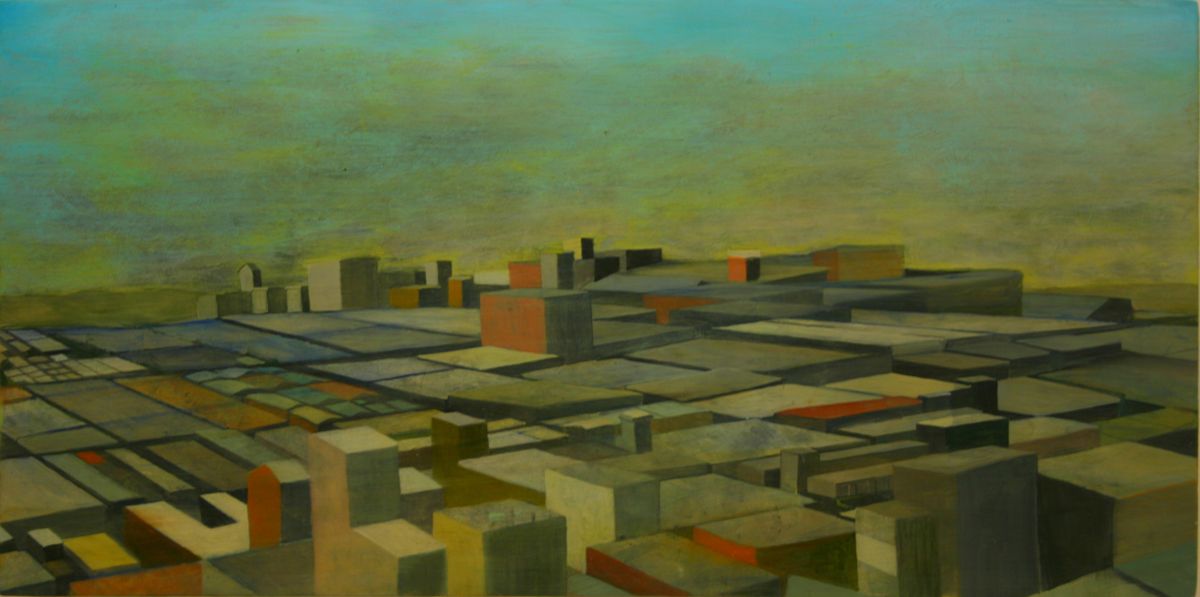On the Wall Jennifer Zurlini
DeVuono paints a unique portrait

Lanny DeVuono is Spokane’s ultimate role model for aspiring female artists.
DeVuono, whose new show opens Tuesday at Whitworth University, is a painter and an arts educator, speaker, writer and advocate.
She has been teaching art for 17 years. As professor of art, drawing and contemporary art theory at Eastern Washington University, she inspires a new generation.
She received a Fulbright Fellowship in 2004, teaching at the College of Fine Arts in Kerala, India.
She seeks out provocative artists and brings them to Spokane for the Visiting Artist Lecture Series, run by EWU, Spokane Falls Community College and the Northwest Museum of Arts and Culture.
She exhibits her paintings across the Northwest and beyond, has works in public collections, and is represented by galleries in Spokane, Portland and Minneapolis.
She writes about contemporary art and is a contributing editor for Artweek.
And she still finds time to bake a cake. DeVuono was putting a chocolate cake in the oven when she answered the phone for an interview last week, preparing for a dinner party – proof positive that a woman really can do it all.
But what first comes to mind about DeVuono is the strength of her artwork, reflective of the strengths she exudes in her professional life.
DeVuono’s paintings have a strong, almost masculine quality about them. The colors and compositions are bold and simplified, with a limited palette mostly of blues, browns, black and white, gravitating toward earth tones.
She applies layers of oil glazes on wood panels, creating richness and depth.
Many of DeVuono’s landscapes emphasize a singular aspect: sky, clouds, sea, treetops. What would typically have been considered “background” in art history becomes her foreground and focal point.
This in itself makes the work edgy and brave, but DeVuono adds an unusual perspective. The viewer is caught looking up, down or from some skewed perspective, attaining a sense of floating above or an aerial view as if from an airplane window.
The altered perspective creates emotional tension, a sense of movement and slight dizziness.
De Vuono began working on her “Histories and Histrionics” series in late 2005 after returning from her teaching fellowship in India.
“Because Kerala was one of the first democratically elected communist governments, and because I was also reading about the Middle East and the World War II period, I was struck with the notion that the past 20th century was full of both hysteria and a history with which we still face,” she wrote in an e-mail.
“I use the landscape to create visual stories. It’s a wide open arena for me to use as examples for our human foibles. It’s a metaphor for our highest aspirations, and for our lowest actions: greed, avarice and war.”
Meagan Stirling, lecturer and gallery director at Whitworth, said De Vuono’s work “draws attention to a disappearing sense of place. Through her choice of imagery, she communicates that our landscape is shifting; place is not what it used to be.”
This is especially evident in her cityscapes. Filled with structures and streets that stretch to the horizon, you feel the encroachment of man. The perspective is slightly off-kilter and you get a sense of uneasiness.
“I don’t make work with a message that I can specifically articulate,” said DeVuono. “Instead, I enjoy what viewers bring to the work themselves.
“For me, paintings, sculpture, all the visual arts, are a way of starting a kind of conversation that differs from words.”
While she shies away from symbolism (“I don’t use that word”), she points to the contradictions that she presents in her work.
In her “After Empire” series, which she will also be showing at Whitworth, the tiny, distant airplanes in her large, open skies speak of freedom, yet “were the most fierce adjunct to our war machine.”
“It’s a mixed bag,” said DeVuono. “Contradictions are the things that make us who we are.”